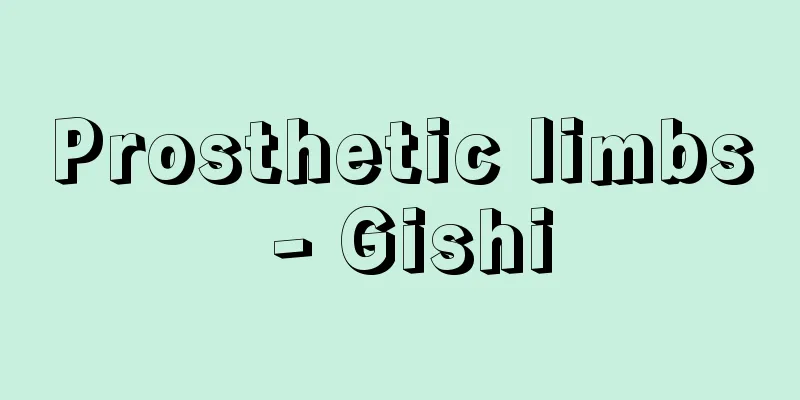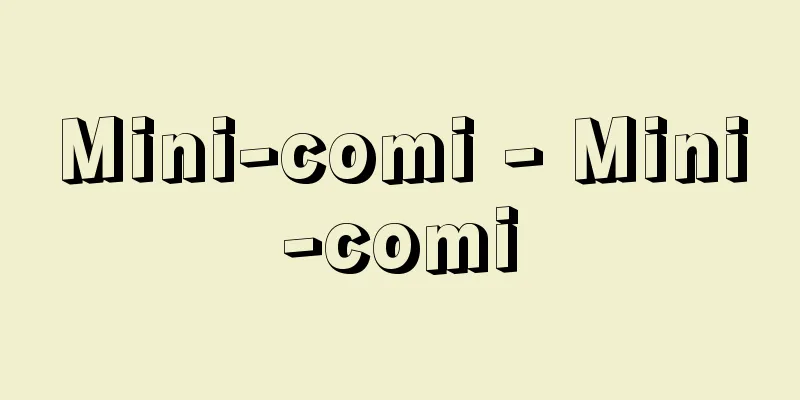Prosthetic limbs - Gishi

|
Prosthetic limbs are substitutes worn after amputation, and there are prosthetic arms for the upper limbs and prosthetic legs for the lower limbs. Prosthetic limbs must be strong, lightweight, high-performance, and easy to use. Prosthetic hands can be broadly divided into decorative prostheses for everyday use, prostheses for work, and active prostheses. Decorative prostheses for everyday use are primarily focused on form, replacing missing parts and are worn decoratively in everyday life. Cosmetic gloves made of synthetic resin are also used for the hand. In contrast, prostheses for work disregard form and are fitted with devices convenient for each task at the stump. Active prostheses use the movement of the shoulder and forearm as a power source, transmitting this to the forearm and hand connected by cables, allowing the hand part of the prosthesis to be actively moved. There are three types of prosthetic limbs: therapeutic prosthetic limbs, working prosthetic limbs, and everyday prosthetic limbs. Therapeutic prosthetic limbs are also called temporary prosthetic limbs, and are used to practice walking with a prosthetic limb before wearing a everyday prosthetic limb. Therefore, they are relatively simple, with no consideration given to shape, and are made of a stump sheath made of plaster or aluminum with a rod or iron leg attached. Working prosthetic limbs are made for work, ignoring shape for the convenience of performing specific tasks. Everyday prosthetic limbs (complete prosthetic limbs) are made to resemble the natural lower limb, with knee and ankle joints and natural-shaped feet for convenience in everyday life such as walking and sitting. Adhesive above-knee prosthetic limbs use the negative pressure generated between the stump and the prosthetic limb sheath to prevent the prosthetic limb from falling off, and do not require shoulder or waist belts. The history of prosthetic limbs is so old that they are said to have been described in ancient Indian books written around 1000 BC, but since then, improvements have been made, and notable progress was made after the First and Second World Wars, especially after the Second World War, when powered prosthetic limbs were developed. These rely on external power sources to move the joints, and are powered by carbon dioxide pressure, electricity, or hydraulics. In Germany, the United Kingdom, Sweden, and other countries, prosthetic limbs are used in which liquid carbon dioxide is filled into a cylinder, which attracted attention for its use in treating thalidomide-affected children. In Europe and the United States, so-called electronic prosthetic limbs are used, which use myoelectric potential to control ultra-small DC motors to act as substitute muscles, and electronic prosthetic hands are the first to be put to practical use. Hydraulic prosthetic limbs are still in development and are being researched in Canada, the United Kingdom, Japan, and other countries. These have excellent features such as silent moving parts and fast response, and are expected to be of great use. In short, the production of prosthetic limbs requires excellent knowledge and skills, and the person using the prosthetic limb must practice and train well in order to achieve their goals. [Takashi Nagai] [Reference item] |Source: Shogakukan Encyclopedia Nipponica About Encyclopedia Nipponica Information | Legend |
|
四肢の切断後に装用する代用肢であり、上肢に使用する義手と下肢に装用する義足とがある。義肢はじょうぶで軽量であり、かつ性能がよく使いやすいことが必要である。 義手には大別して常用装飾用義手、作業用義手、能動義手がある。常用装飾用義手は形態を主としたもので、欠損した部分の補填(ほてん)であって、日常、装飾的に装用するものである。手部には合成樹脂製の装飾用手袋cosmetic gloveも使われる。これに対し作業用義手は、形態は度外視して、切断端にそれぞれの作業に便利な器具をつけたものである。能動義手は、肩や前腕の運動を力源とし、これをケーブルで連結した前腕や手部に伝えて、能動的に義手の手の部分を動かせるようにしたものである。 義足には治療用義足、作業用義足、常用義足がある。治療用義足は仮(かり)義足ともいわれ、常用義足を装用する前に、義足での歩行を練習するためのものである。したがって形態的なことは考えず、ギプスやアルミニウムでつくった断端鞘(しょう)に棒や鉄脚をつけた比較的簡単なものである。作業用義足は、特定の作業を行うために便利なように形態を度外視して作製した労働用のものである。常用義足(完装義足)は、形を自然の下肢に似せて歩行や座ることなど日常生活に便利なように、膝(しつ)関節や足関節をつけ、足も自然の形のものをつけて作製したものである。吸着式大腿(だいたい)義足は、切断端と義足の断端鞘との間に生ずる陰圧を利用して義足が脱落しないようになっており、肩ベルトや腰ベルトを必要としない。 義肢の歴史は、紀元前1000年ごろに書かれたインドの古書にその記述があるといわれるほど古いが、その後改良が加えられてきたわけであり、顕著な進歩といえば第一次および第二次世界大戦後で、とくに第二次世界大戦後に発達してきたのが動力義肢である。これは、関節部を動かす力源を外部動力に求めるもので、炭酸ガス圧、電気、油圧を動力源としている。ドイツ、イギリス、スウェーデンなどでサリドマイド児用に使われて注目された液体炭酸ガスをボンベに充填(じゅうてん)して使われたものをはじめ、電気式としては筋電位を使って超小型直流電動機を制御して代用筋の役割を果たそうとする、いわゆる電子義肢が欧米で使われ、まず電子義手が実用化されている。油圧式は開発途上にあり、カナダ、イギリス、日本などで研究されている。これは、可動部の無音や速応性など優れた点があり、期待されている。要するに、義肢の製作には優れた知識と技術を必要とし、また義肢を用いる人はよく練習し訓練しなければ目的を達することができない。 [永井 隆] [参照項目] |出典 小学館 日本大百科全書(ニッポニカ)日本大百科全書(ニッポニカ)について 情報 | 凡例 |
Recommend
Elako - Elako
It is a marine animal belonging to the order Sede...
Idris b.'Abd Allah
…789-926. The fourth caliph, Idris b.'Abd All...
Cimmerian
An Iranian ethnic group that first formed a horse-...
Juilliard String Quartet
An American chamber orchestra. It was founded in ...
Henry Draper
American astronomer and founder of astrophotograp...
Wind-pollinated flower - Fuubai-ka
This refers to flowers that are pollinated when p...
Cook Islands (English spelling)
An archipelago located in the South Pacific Ocean ...
Sillabo - Shiragibo
A settlement of Silla people in China during the U...
Hazel - Hazel
A deciduous shrub of the Betulaceae family (APG c...
Karakara (sakeware) - Karakara
…Currently, water is added to the aged awamori to...
Makkari
〘Noun〙 (maggərri)⸨Makgeolli⸩ A cloudy alcoholic dr...
Geitel, HF - Gaiteru
…In 1900, PEA Lenard discovered that this phenome...
Lightness - Made
A color attribute, which indicates the brightness...
Salt tax - Gabelle
Also called the gabelle. A tax on salt before the ...
Briand, Aristide
Born: March 28, 1862 in Nantes [Died] March 7, 193...









